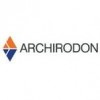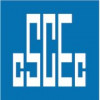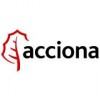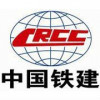Add office photos
Employer?
Claim Account for FREE
National Institutes of Health
3.5
based on 4 Reviews
About National Institutes of Health
Founded in1887 (138 yrs old)
India Employee Count--
Global Employee Count10k-50k
HeadquartersBethesda
Office Locations
--
Websitenih.gov
Primary Industry
--
Other Industries
Are you managing National Institutes of Health's employer brand? To edit company information,
claim this page for free
The National Institutes of Health (NIH), through its own research and the distribution of grants, seeks to understand disease inside and out. Part of the US Department of Health and Human Services, NIH is the government's main medical research entity. It comprises 27 institutes and centers covering every medical discipline, from general medical sciences to alternative therapies. The organization has some 6,000 scientists of its own and gives out at least 50,000 grants to researchers at more than 3,000 universities, hospitals, and research labs in all 50 states. Among its vast array of projects, NIH has supported efforts to develop an AIDS vaccine, map human genetic variation, and study avian flu.
Mission: NIH’s mission is to seek fundamental knowledge about the nature and behavior of living systems and the application of that knowledge to enhance health, lengthen life and reduce illness and disability
Managing your company's employer brand?
Claim this Company Page for FREE
National Institutes of Health Ratings
based on 4 reviews
Overall Rating
3.5/5
How AmbitionBox ratings work?
5
2
4
1
3
0
2
1
1
0
Category Ratings
5.0
Salary
5.0
Skill development
4.2
Work-life balance
4.2
Work satisfaction
4.0
Company culture
4.0
Promotions
2.9
Job security
National Institutes of Health is rated 3.5 out of 5 stars on AmbitionBox, based on 4 company reviews.This rating reflects an average employee experience, indicating moderate satisfaction with the company’s work culture, benefits, and career growth opportunities. AmbitionBox gathers authentic employee reviews and ratings, making it a trusted platform for job seekers and employees in India.
Read more
National Institutes of Health Reviews
Compare National Institutes of Health with Similar Companies
Change Company | Change Company | Change Company | ||
|---|---|---|---|---|
Overall Rating | 3.5/5 based on 4 reviews | 3.9/5 based on 40.7k reviews | 3.7/5 based on 1.9k reviews | 3.9/5 based on 4.3k reviews |
Highly Rated for | Skill development Salary Work-life balance | Job security Skill development | No highly rated category | Skill development Promotions |
Critically Rated for | Job security | Promotions | Job security Promotions Work satisfaction | No critically rated category |
Primary Work Policy | - | Work from office 84% employees reported | Work from office 80% employees reported | Work from office 85% employees reported |
Rating by Women Employees | - no rating available | 3.7 Good rated by 8.6k women | 3.5 Good rated by 125 women | 3.8 Good rated by 511 women |
Rating by Men Employees | - no rating available | 3.9 Good rated by 30.1k men | 3.7 Good rated by 1.7k men | 3.9 Good rated by 3.5k men |
Job security | 2.9 Poor | 4.0 Good | 3.2 Average | 3.7 Good |
View more
National Institutes of Health Salaries
National Institutes of Health salaries have received with an average score of 5.0 out of 5 by 4 employees.
Post Doctoral Fellow
(2 salaries)
Unlock
₹5.4 L/yr - ₹6.9 L/yr
Reactjs Developer
(1 salaries)
Unlock
₹10.4 L/yr - ₹13.3 L/yr
SSO
(1 salaries)
Unlock
₹0.2 L/yr - ₹0.2 L/yr
Senior Officer
(1 salaries)
Unlock
₹4.8 L/yr - ₹6.2 L/yr
Seles Executive
(1 salaries)
Unlock
₹5 L/yr - ₹6.3 L/yr
Data Entry Operator
(1 salaries)
Unlock
₹1.9 L/yr - ₹2.5 L/yr
Senior Research Fellow
(1 salaries)
Unlock
₹4.5 L/yr - ₹5.8 L/yr
Senior Developer
(1 salaries)
Unlock
₹12.6 L/yr - ₹16.1 L/yr
Software Engineer
(1 salaries)
Unlock
₹5.4 L/yr - ₹6.9 L/yr
Resource Person
(1 salaries)
Unlock
₹3.2 L/yr - ₹4.1 L/yr
National Institutes of Health News
View all
Revolutionary AI Technology Creates Detailed 3D Brain Map
- Researchers at the University of Florida have developed MetaVision3D, an AI-driven computational framework that creates a detailed 3D map of the mouse brain, offering unprecedented insights into brain metabolism and pathology.
- MetaVision3D allows visualization of molecules crucial for energy production in brain cells, aiding in the study of metabolic pathways underlying diseases like Alzheimer’s.
- Funded by the National Institutes of Health, this groundbreaking technology enhances researchers' understanding of brain function and metabolic dysregulation in diseases.
- Dr. Ramon Sun led the team in creating a high-resolution brain atlas using UF’s HiPerGator supercomputer, capturing detailed molecular architecture with advanced imaging techniques.
- The framework integrates AI tools to align images and map thousands of brain metabolites accurately, leading to insights on neurodegenerative conditions.
- MetaVision3D's interactive nature allows researchers to explore brain structures, facilitating investigations into the links between metabolism, cognition, and disease.
- The tool's ability to correlate anatomical structures with metabolic pathways offers promise in uncovering changes in neurodegenerative diseases and identifying therapeutic targets.
- Integrating MetaVision3D with MRI and genetic testing may revolutionize treatment approaches by focusing on localized interventions for improved efficacy and reduced side effects.
- This innovative research signifies a move towards personalized treatment strategies in clinical neuroscience by harnessing the power of high-resolution 3D mapping and AI technology.
- MetaVision3D represents a significant advancement in neuroscience methodology, promising vital insights into brain health and disease foundations, paving the way for future therapeutic innovations.
Bioengineer | 20 Mar, 2025

Moffitt Research Reveals Potential of Vaccine to Enhance Breast Cancer Treatment Efficacy
- Researchers at Moffitt Cancer Center have developed a vaccine strategy to address HER2-positive, ER-negative breast cancer, a challenging subtype with a poor prognosis.
- A pilot study published in npj Breast Cancer showcased promising results of a dendritic cell vaccine targeting HER2 in 30 patients with this subtype.
- The vaccine was administered before chemotherapy, leading to notable immune system activity and significant instances of complete tumor disappearance.
- By boosting the body's immune response, the dendritic cell vaccine could enhance the effectiveness of standard chemotherapy regimens.
- Injecting the vaccine directly into the tumor site heightened immune cell activity, suggesting a potential breakthrough in immunotherapy strategies.
- The study's implications extend to personalized medicine strategies and a shift towards leveraging immunological pathways for better cancer treatment outcomes.
- Funded by institutions like the NIH and the US Department of Defense, the research underscores the importance of advancing oncological research in challenging cancer types.
- Further research and larger scale studies are deemed necessary to validate and optimize the dendritic cell vaccine's efficacy in diverse patient populations.
- The integration of dendritic cell vaccines with chemotherapy presents a dual approach that aims to target tumors effectively and improve patient quality of life.
- The findings from Moffitt Cancer Center suggest a promising future for combining immunotherapy with traditional treatments to enhance breast cancer therapy outcomes.
Bioengineer | 19 Mar, 2025

US science rues ongoing demotion of research under President Trump
- US science is facing budget cuts and staff reductions in various government agencies under President Trump's administration, impacting programmes related to climate change and diversity, equity, and inclusion (DEI).
- Elon Musk's Department of Government Efficiency (DOGE) fired over 300 employees at the National Nuclear Safety Administration before rescinding most of the sackings due to national security concerns.
- The NSF and CDC employees who were laid off have been reinstated, but the NSF is still reducing its workforce and research programmes, affecting initiatives like Research Experiences for Undergraduates.
- NASA is closing offices and reducing workforce, including cutting its science budget significantly, while the NOAA layoffs could impact weather forecasting and public safety during extreme weather events.
- The Trump administration's policies extend to climate science, with budget cuts at EPA, removal of climate change data from USDA website, and disruption of planning meetings on climate change.
- NIH is canceling grants related to DEI and transgender issues, facing direct and indirect funding cuts, while universities are navigating policies impacting international students and research funding.
- The US scientific community is pushing back through legal challenges, advocacy efforts, and rallies, warning of the potential threat to American science caused by the current administration's actions.
- A coalition of leaders, Vision for American Science and Technology, emphasizes the need for increased investment in science to maintain US competitiveness in the global arena of science and technology.
- The National Academy of Sciences president, Marcia McNutt, stresses the importance of stable federal funding for research to drive innovation and technological advancements that benefit various sectors, including AI and materials science.
Physicsworld | 12 Mar, 2025

NCI employees can’t publish information on these topics without special approval
- Employees at the National Cancer Institute (NCI) have been instructed to flag manuscripts or communications that address "controversial, high profile, or sensitive" topics.
- The NCI provided internal guidance to review publications related to hot-button issues, including vaccines, fluoride, peanut allergies, and autism.
- The extent of the list and the requirement for review by a clearance team is unprecedented and unusual, according to anonymous NCI employees.
- All materials flagged by the employees must undergo scrutiny by officials at the National Institutes of Health and possibly the US Department of Health and Human Services.
Arstechnica | 11 Mar, 2025

Study Highlights Crucial Antibodies for Advancing a Universal Norovirus Vaccine
- Scientists from The University of Texas at Austin, the University of North Carolina at Chapel Hill, and the National Institutes of Health collaborated on a study unveiling potent antibodies for combating norovirus, a major cause of gastroenteritis globally.
- Their research, published in Science Translational Medicine, identified antibodies capable of neutralizing various norovirus strains, offering hope for a universal vaccine and therapeutic antibodies.
- Norovirus infects millions annually, posing a severe threat to vulnerable populations due to its genetic diversity and mutation capabilities.
- Through advanced molecular analysis, the team discovered broadly neutralizing antibodies from individuals in an experimental vaccine trial, showing efficacy against multiple norovirus strains.
- Particularly promising is the antibody VX22, which targets a unique viral site and neutralizes different genotypes, making it a strong candidate for vaccine development.
- The urgent need for a norovirus vaccine is emphasized by increasing cases, especially during winter, and the virus's prevalent transmission through contaminated sources.
- The identified antibodies not only hold promise for a vaccine but also for post-infection therapies, aiding individuals with compromised immune systems fighting norovirus.
- The ongoing research aims to refine vaccine design and verify findings across diverse populations, ensuring safety and efficacy for all demographics.
- The collaborative efforts and funding support from institutions like the NIH are propelling advancements in norovirus research, offering potential solutions for public health strategies.
- These significant findings bring optimism for combating norovirus, seeking to improve health outcomes and reduce the virus's impact on global health.
- With the hope of a viable vaccine becoming more tangible, ongoing research aims to enhance mitigation strategies against norovirus, fostering better health for at-risk populations.
Bioengineer | 6 Mar, 2025

Research Highlights Need for Personalized Approaches in Stroke Rehabilitation
- A groundbreaking study by Georgetown University Medical Center, in collaboration with MedStar Health and NIH, introduces an innovative brain imaging technique for stroke rehabilitation.
- The study focuses on assessing white matter tracts that relay signals to limbs, crucial for motor function recovery after a stroke.
- The novel imaging technique, diffusion tensor-based morphometry (DTBM), accurately maps and quantifies changes in white matter tracts.
- In living stroke survivors, DTBM enables the measurement of white matter tract atrophy, aiding in predicting motor recovery potential.
- Observable atrophy in critical brain cables strongly correlates with diminished chances for meaningful motor function recovery.
- The research article detailing these findings will be published in Neurology on March 3, 2025.
- Understanding recovery likelihood early can help tailor rehabilitation strategies effectively.
- Therapists can adjust approaches based on DTBM findings, supporting adaptive techniques for patients.
- Further studies are needed to solidify observations into standard rehabilitation protocols.
- The collaborative efforts underline a collective commitment to enhancing stroke recovery and quality of life.
Bioengineer | 4 Mar, 2025

Breakthrough ‘Ultra-Rapid’ Testing Reveals Cancer Genetics During Surgery
- Researchers at NYU Langone Health have developed a groundbreaking technology called Ultra-Rapid droplet digital PCR (UR-ddPCR) for near-instantaneous cancer cell identification during surgery, especially in neurosurgery.
- UR-ddPCR significantly enhances surgical precision by providing real-time molecular insights into tumor genetics, allowing surgeons to remove brain tumors more accurately.
- This technology can detect minuscule quantities of cancer cells, with the ability to identify as few as five malignant cells per square millimeter in just 15 minutes, unlike traditional methods that take hours.
- Efficient tumor cell removal is crucial in cancer surgery, and UR-ddPCR's rapid and accurate detection capabilities help optimize surgical strategies in real-time to prevent recurrence.
- The tool was validated in tests on glioma patients, demonstrating concordance with standard PCR methods and genetic sequencing, showing promise for in situ detection during surgery.
- UR-ddPCR reduces DNA extraction time significantly and improves sample processing protocols without compromising reliability, paving the way for enhanced surgical interventions.
- Integrating UR-ddPCR with stimulated Raman histology allows assessment of genetic mutations and tumor cell density, providing deeper insights for surgeons during procedures.
- While the technology shows promise, further refinements and clinical trials are needed before widespread implementation, with a focus on automating processes for complex surgeries and expanding applicability across malignancies.
- Supported by the National Institutes of Health and Bio-Rad, the collaborative effort behind UR-ddPCR exemplifies modern scientific progress aiming to transform patient care in oncology.
- As UR-ddPCR progresses towards clinical use, the healthcare industry anticipates its potential to revolutionize cancer resection and improve decision-making accuracy, ultimately aiming to enhance patient outcomes across various cancers.
Bioengineer | 26 Feb, 2025

Revolutionary Bone Marrow Transplant Offers Hope for Sickle Cell Disease Cure
- A clinical trial led by the Johns Hopkins Kimmel Cancer Center and other centers has shown promise in a new bone marrow transplant procedure for sickle cell disease.
- The trial focuses on reduced-intensity haploidentical bone marrow transplantation, allowing transplants from 'half-matched' donors, broadening the donor pool.
- Pre-transplantation regimen involves low-dose chemotherapy and total body irradiation, with post-transplant cyclophosphamide to reduce graft-versus-host disease risk.
- Results reveal 95% of participants survived two years post-transplant, with 88% cured, challenging gene therapy's efficacy.
- Dr. Richard Jones emphasizes comparable outcomes to gene therapy and the importance of accessible treatments for sickle cell disease.
- The procedure's safety and efficiency with half-matched donors refute common misconceptions, making it cost-effective compared to gene therapy.
- The study's implications extend to healthcare system efficiency, emphasizing the importance of tailored medical interventions for diverse populations.
- The diverse trial cohort, primarily Black individuals, highlights the need for equitable access to innovative therapies considering demographic disparities.
- Ongoing research collaboration and support from institutions like the NIH underscore the potential for widespread impact of haploidentical transplantation.
- Continued study is vital for long-term safety and efficacy evaluation, with a focus on educating healthcare professionals and patients for informed decision-making.
Bioengineer | 26 Feb, 2025

Unveiling Genetic Factors Behind Congenital Heart Disease
- A study by the Icahn School of Medicine uncovers genetic factors contributing to congenital heart disease (CHD), potentially transforming diagnosis and understanding of the condition.
- The research delves into digenic inheritance, highlighting how gene pairs interact to influence CHD risk, offering new insights into the genetic complexities of the disease.
- By analyzing exome sequencing data, ten gene pairs crucial in CHD development were identified, shedding light on hidden genetic liabilities.
- The study's innovative approach emphasizes the importance of genetic interactions beyond single-gene mutations for enhanced diagnostic yields in clinical genetics.
- Researchers aim to extend the digenic approach to other complex diseases, potentially unraveling genetic contributions in conditions with missing heritability.
- Collaboration and funding from institutions like the National Institutes of Health play a vital role in advancing genetic research and addressing complex disease mechanisms.
- The study bridges genetic research and clinical application, paving the way for improved therapies tailored to individual genetic profiles for congenital heart disease.
- Digenic models present promise in understanding disease development, indicating a shift towards comprehensive strategies to combat congenital conditions and complex diseases.
- The study's impact extends beyond congenital heart diseases, offering avenues for redefining diagnostic strategies and therapeutic interventions in genetic medicine.
- By advocating for innovation and collaboration in genetic studies, researchers hope to unravel further complexities in human genetics and propel the discipline to new healthcare frontiers.
- This research sparks dialogue within the scientific community, setting the stage for future inquiries into genetic interactions in disease mechanisms, shaping the landscape of clinical genetics.
Bioengineer | 20 Feb, 2025

Groundbreaking Implant Aids in Pinpointing Effective Treatments for Multiple Sclerosis in Mouse Models
- A groundbreaking study led by University of Michigan researchers explores a novel approach to understanding and treating primary progressive multiple sclerosis (PPMS) using a sponge-like implant.
- The research aims to slow or halt the progression of PPMS, known for its rapid advancement and severe disability outcomes within a short time frame.
- Utilizing nanoparticle-based treatment in mouse models showed potential in altering disease trajectories, preventing paralysis onset, and reducing symptom severity.
- Accessing live tissue samples from MS patients, particularly PPMS, poses a challenge, leading researchers to use a biodegradable implant to mimic the immune environment in mice.
- The implant allowed for the study of immune responses akin to those in the central nervous system, uncovering the significance of CC chemokines in disease progression.
- Injectable nanoparticles targeting overactive CC chemokines showed promising results in reducing disease activity and symptoms in treated mice.
- The study's findings offer insights into the mechanisms of PPMS and propose a dual therapeutic approach to halt disease progression and alleviate symptoms.
- The collaborative research, supported by prestigious institutions like the University of Michigan and the NIH, highlights the interdisciplinary efforts driving medical breakthroughs.
- Unlike current FDA-approved treatments relying on immunosuppression, the nanoparticle approach aims to correct immune over-activation while preserving essential functions and mitigating autoimmune attacks.
- While further research is required for clinical translation, the study indicates a potential shift in treating progressive MS through targeted therapeutic interventions.
- University of Michigan study's innovative use of engineered immunological niches represents a significant advancement in understanding and potentially treating primary progressive multiple sclerosis.
Bioengineer | 19 Feb, 2025

Powered by
Compare National Institutes of Health with

Kantar
3.5

Dentsu Aegis Network
3.4

Essel Group
4.2

Archirodon
3.9

International Flavors & Fragrances
3.8

China State Construction Engineering Corporation
3.8

WHSmith
4.3

ACCIONA
3.6

China Railway Construction Corporation
4.1

ABCL
4.0

Al-Rushaid Construction Co. Ltd (ARCC)
3.9

Elsewedy Electric
4.3

Bertelsmann
4.4

Bahria Town
4.9

BlouinArtinfo
1.2

Murray & Roberts
4.1

Coles
4.2

Jack in the Box Worldwide
1.7

Tencent
4.6

Eei Corporation
4.6
Edit your company information by claiming this page
Contribute & help others!
You can choose to be anonymous
Companies Similar to National Institutes of Health

HDFC Bank
Financial Services, Media & Entertainment / Publishing, Banking, Insurance, NBFC
3.9
• 40.7k reviews

Manappuram Finance
Financial Services, Media & Entertainment / Publishing, NBFC
3.9
• 4.3k reviews

Emcure Pharmaceuticals
Media & Entertainment / Publishing
3.7
• 1.9k reviews

Kantar
Consulting, Media & Entertainment / Publishing, Analytics & KPO
3.5
• 1.1k reviews

Dentsu Aegis Network
Media & Entertainment / Publishing, Marketing & Advertising
3.4
• 252 reviews

Essel Group
Financial Services, Media & Entertainment / Publishing, Metals & Mining, Media & Entertainment
4.2
• 221 reviews

Archirodon
Media & Entertainment / Publishing, Marine, Engineering & Construction
3.9
• 219 reviews

International Flavors & Fragrances
Chemicals / Agri Inputs, Manufacturing, Media & Entertainment / Publishing, Chemicals
3.8
• 218 reviews

China State Construction Engineering Corporation
Media & Entertainment / Publishing, Engineering & Construction
3.8
• 164 reviews

WHSmith
Media & Entertainment / Publishing, Retail
4.3
• 81 reviews

ACCIONA
Internet, Media & Entertainment / Publishing
3.6
• 59 reviews

China Railway Construction Corporation
Media & Entertainment / Publishing
4.1
• 53 reviews
National Institutes of Health FAQs
When was National Institutes of Health founded?
National Institutes of Health was founded in 1887. The company has been operating for 138 years.
Where is the National Institutes of Health headquarters located?
National Institutes of Health is headquartered in Bethesda.
What are the pros and cons of working in National Institutes of Health?
Working at National Institutes of Health comes with several advantages and disadvantages. It is highly rated for salary & benefits, skill development and work life balance. However, it is poorly rated for job security, based on 4 employee reviews on AmbitionBox.
Stay ahead in your career. Get AmbitionBox app

Helping over 1 Crore job seekers every month in choosing their right fit company
75 Lakh+
Reviews
5 Lakh+
Interviews
4 Crore+
Salaries
1 Cr+
Users/Month
Contribute to help millions
Get AmbitionBox app